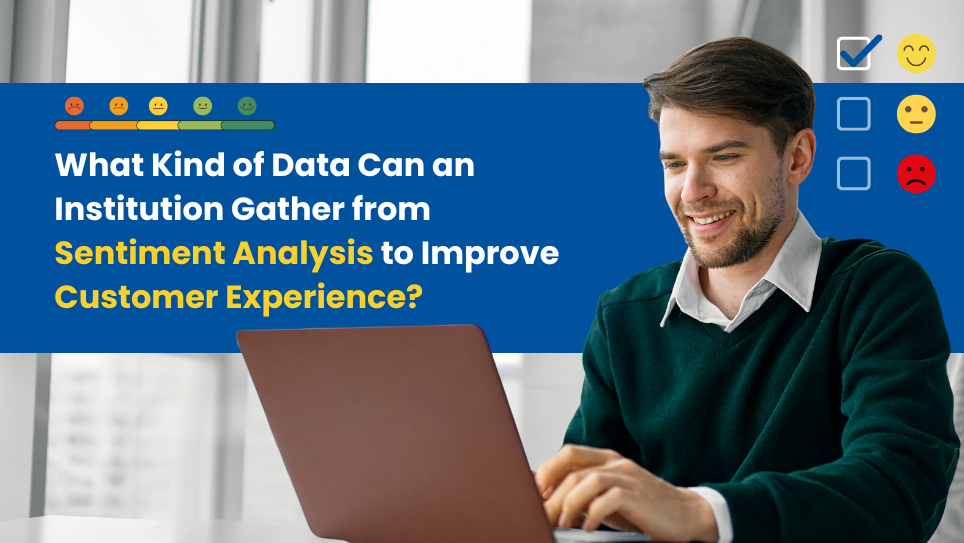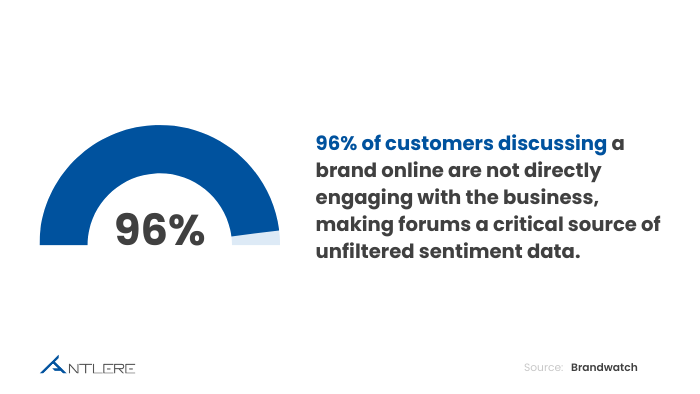

What Kind of Data Can an Institution Gather from Sentiment Analysis to Improve Customer Experience?
Imagine being able to tell exactly what’s going on in your customers’ minds in terms of how they perceive your brand or product. Fortunately, it is possible with sentiment analysis. Successful brands understand the importance of customer experience.
A single bad review can catch fire instantly and ruin your business reputation. This risk can be rectified by catching your customer’s sentiments early. Insights from sentiment analysis could eventually turn an unhappy customer into a satisfied and loyal one.
Sentiment analysis enables brands to dive deep into customer feedback and emotions. It can truly be a game-changer. So, what kind of data can an institute gather from sentiment analysis to improve customer experience? Let’s explore the power of sentiment analysis and how it can be transformative for your customer support.
Customer Feedback
One of the sources of data you can get from sentiment analysis is customer feedback. It reflects the voice of your customers and minimizes the chances of misinterpretations. Businesses can gather customer feedback from various sources including:

Customer Surveys (CSAT, NPS, CES)
Customer surveys help caption customer opinions in a structured way. Customer sentiment analysis identifies the emotional undertones in customer responses for a deeper insight. The Hilton Hotel, for example, uses sentiment analysis in their post-stay surveys to highlight areas of dissatisfaction and improve their customer service. This survey data helps them in bettering their services and tackling problems before they spiral.
Customer Reviews
Online review platforms like Yelp and Google provides some great feedback. By using customer sentiment analysis, businesses can categorize reviews as neutral, positive, or negative, and uncover common themes in customer sentiment. According to a stat by BrightLocal, 8s8% of customers consider online reviews as influential, emphasizing their significance in shaping your brand strategy and reputation. Amazon uses product reviews to uncover recurring pain points, driving changes in their service strategy and product design.
Social Media Posts
When it comes to authentic and unfiltered customer sentiment, social media platforms serve as a goldmine. Brands can use sentiment analysis to evaluate direct feedback, brand mentions, and hashtags. Netflix employs social media customer sentiment to improve recommendations and predict viewer preferences. Sprout Social statistics suggest that 47% of customers have used social media to voice their complaints, making it essential to monitor and act on your client sentiment to maintain brand loyalty.
Live Chat Transcripts
Live chat interactions help capture real-time sentiment – providing insights on customer satisfaction and frustration levels. Customer sentiment analysis enables businesses to prioritize problem areas based on customer sentiment during these live conversations.
According to a HubSpot report, 82% of customers rate an immediate answer as incredibly crucial when contacting a brand, underscoring the importance of live chat in shaping customer experiences.

Sentiment analysis enables institutions to evaluate live interactions, identifying and prioritizing issues based on customer sentiment during the conversation.
Email Exchanges
Emails contain in-depth narratives about customer experiences. Sentiment analysis can be used to extract sentiments and key phrases from these email exchanges, offering a thorough understanding of customer concerns. Microsoft, for example, uses sentiment analysis on customer support emails to enhance response strategies, attaining a 15% drop in resolution time. Research suggests that customized responses extracted from customer sentiment data can boost customer satisfaction by up to 80%.
Online Community Forums
Online forums, like Quora, Reddit, and other brand-specific platforms, are incredibly useful for in-depth peer discussions and customer feedback. Brand sentiment analysis on these hubs enable brands to understand how customers feel about your services or products in a communal context. Sony PlayStation, for instance monitors gaming forums to evaluate player sentiment on game features and updates. Such insight has enabled them to release timely updates and patches, elevating player retention and satisfaction.
According to a Brandwatch, 96% of customers discussing a brand online are not directly engaging with the business, making forums a critical source of unfiltered real time sentiment data.

By mining these discussions, businesses can proactively address concerns and tap into customer needs.
Bottom Line
Sentiment analysis highlights the underlying emotions for customer interactions, converting raw data into actionable insights. By evaluating sources like reviews, surveys, social media insights, live chats, and more, brands can understand their consumers on a deeper level, address friction areas proactively, and provide customized experiences that elevate loyalty. As industries become more and more competitive, leveraging real time sentiment data is no longer a luxury – it’s imperative for staying relevant in the industry.
Ready to turn insights into impact? With Antlere’s sentiment analysis, you can uncover what your customers really feel and take your customer experience to the next level. Visit Antlere today to explore how our innovative solutions can transform your business into a customer-first powerhouse.

Frequently asked questions
What industries benefit the most from sentiment analysis?
Sentiment analysis is widely applicable across industries like e-commerce, hospitality, entertainment, finance, healthcare, and telecom. For instance, e-commerce platforms use it to analyze product reviews, and the healthcare sector leverages it to assess patient feedback for service improvement.
What impact does AI have on the accuracy of sentiment analysis?
AI drives sentiment analysis by using advanced algorithms to process large datasets, identify trends, and improve accuracy over time. AI-powered sentiment analysis tools can learn from stored data to predict customer sentiment more effectively and adapt to changing communication styles.
How can sentiment analysis elevate employee performance in customer service?
By analyzing feedback and live interactions, sentiment analysis identifies areas where customer service agents can improve, such as response tone or problem-solving skills. Insights can guide targeted training programs, leading to better customer-agent interactions.
Can sentiment analysis be applied to voice data?
Sentiment analysis can monitor spikes in negative customer sentiment in real time, allowing businesses to identify and address issues before they escalate. For example, if a product recall generates backlash on social media, sentiment analysis can help prioritize and respond effectively to public concerns.
How does sentiment analysis support product development?
Sentiment analysis identifies recurring themes or pain points in customer feedback, helping businesses understand what customers like or dislike about a product. These insights guide product enhancements, feature updates, or entirely new product lines that align with customer expectations.



